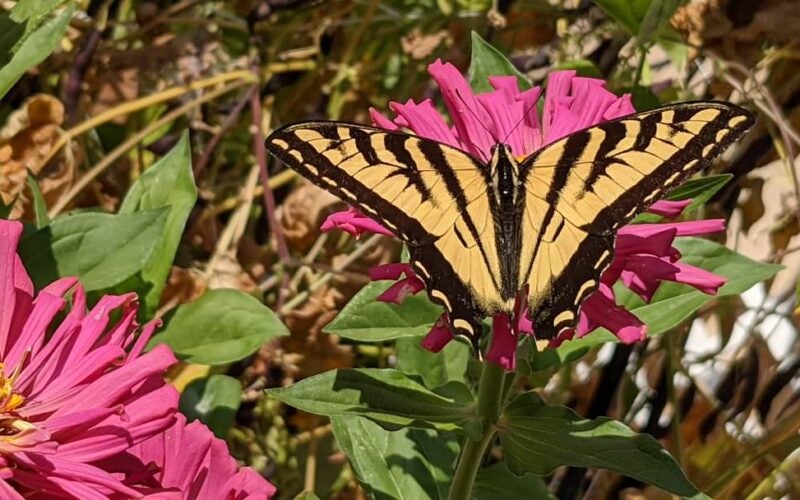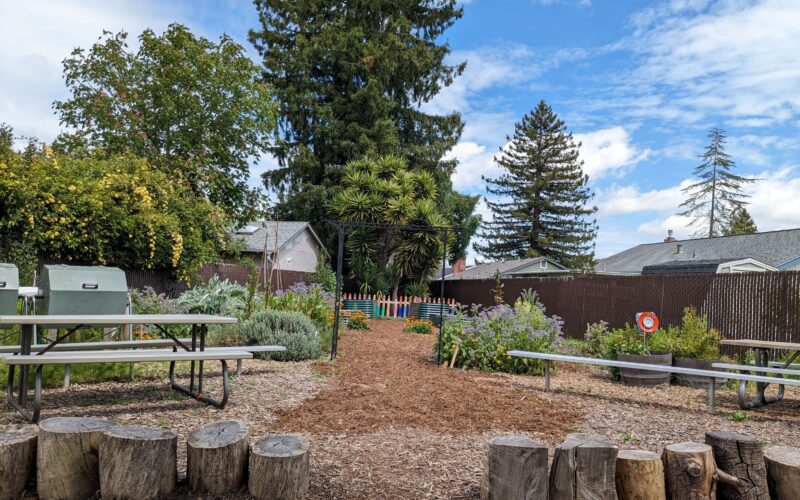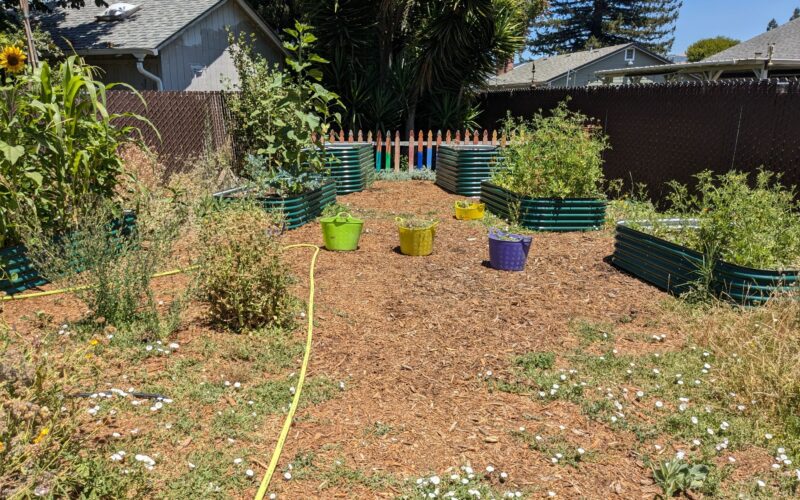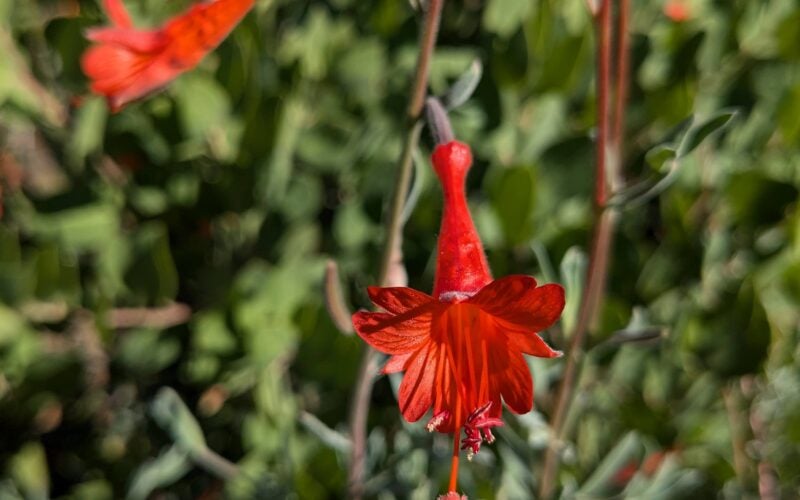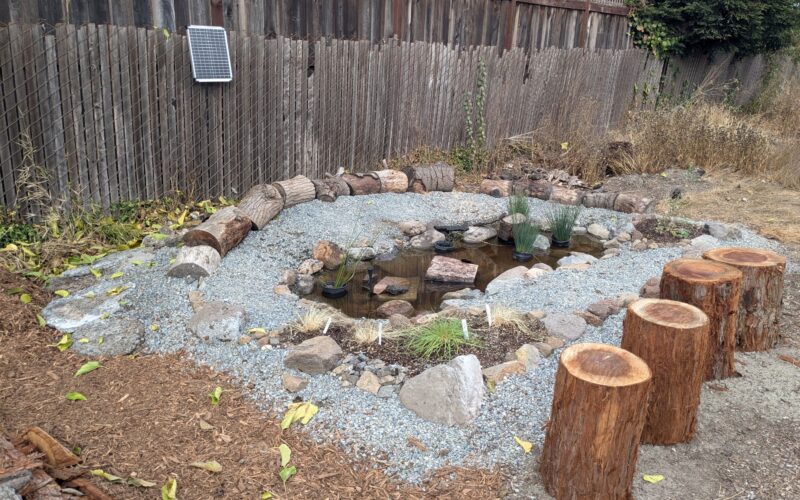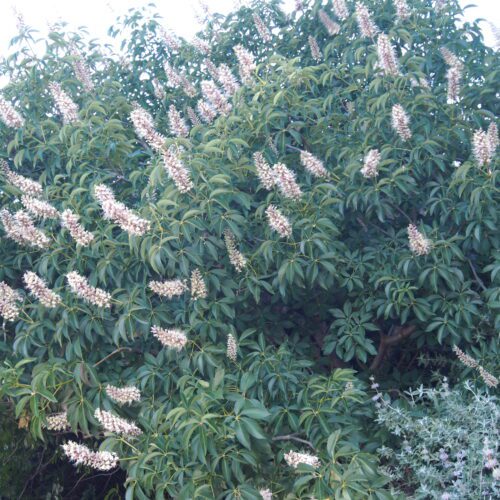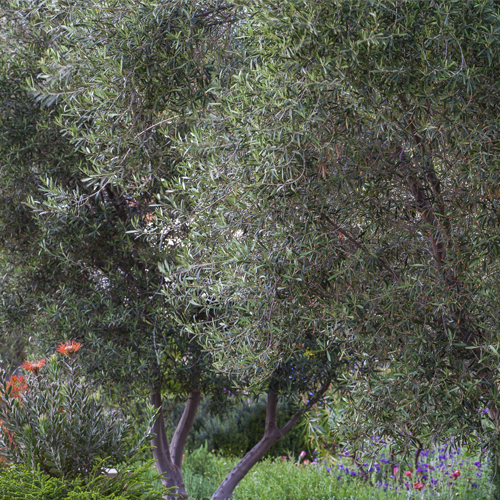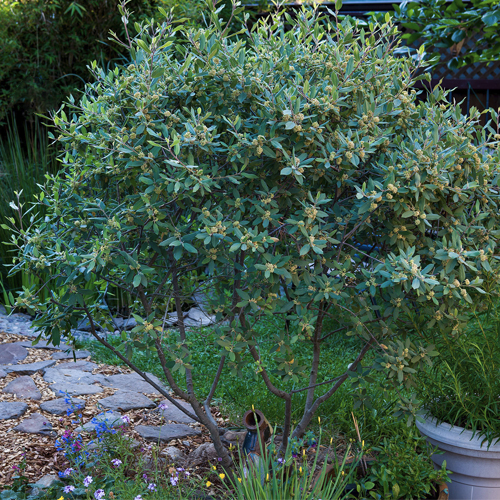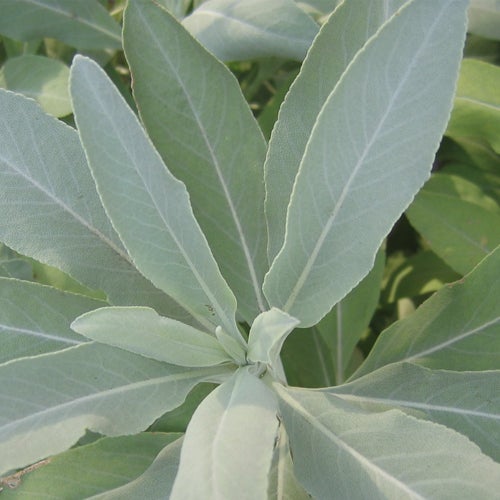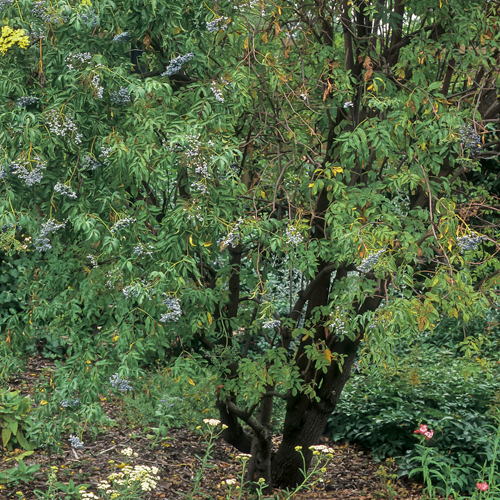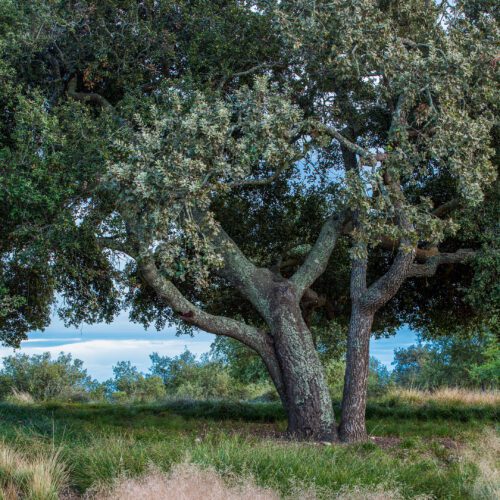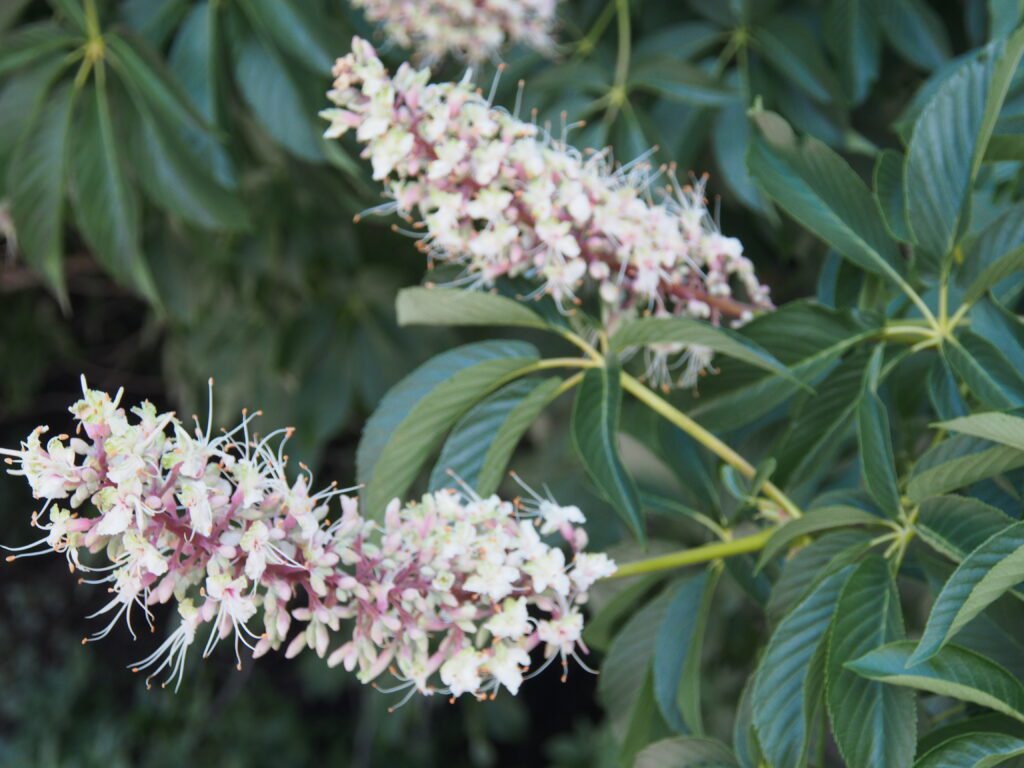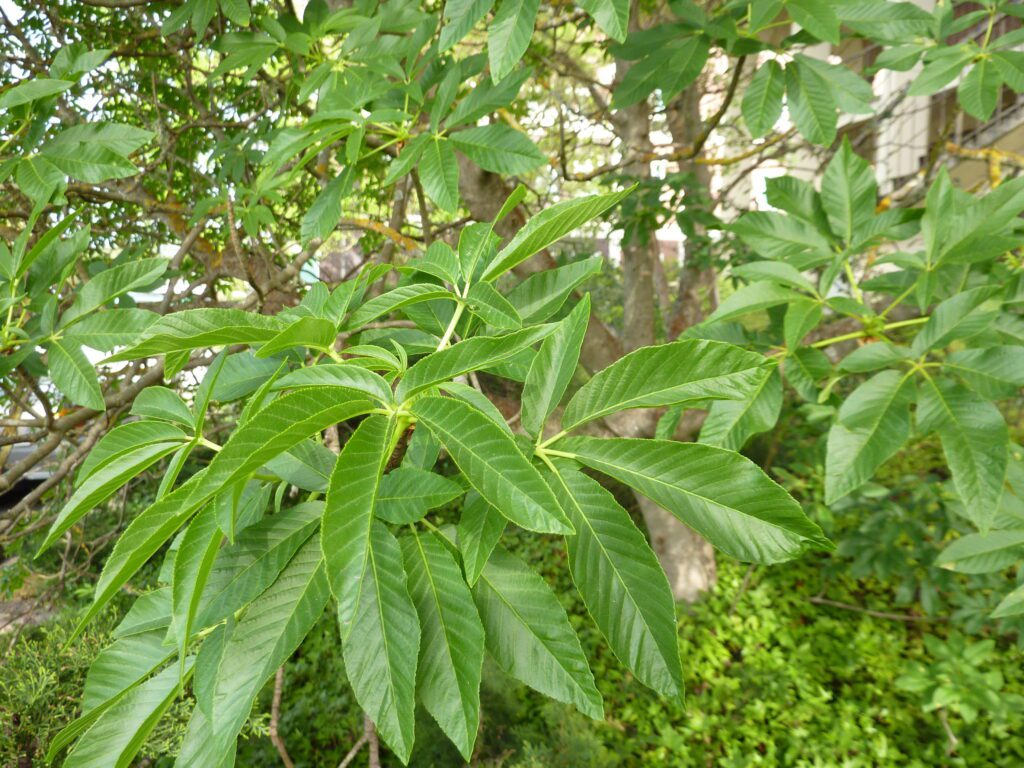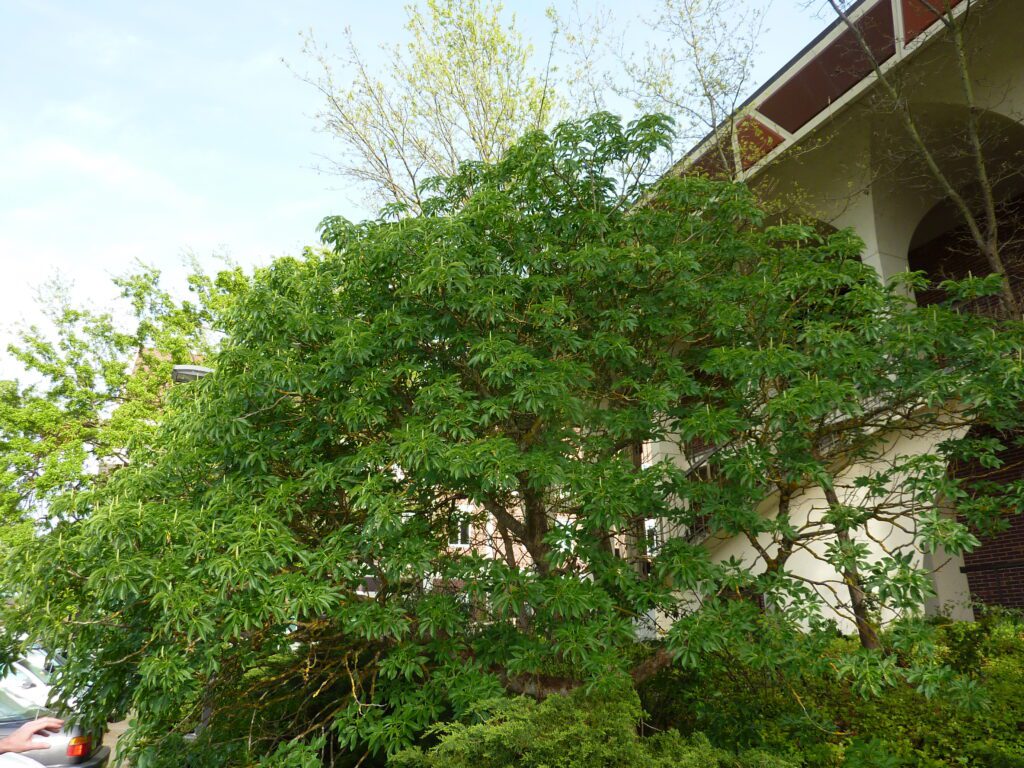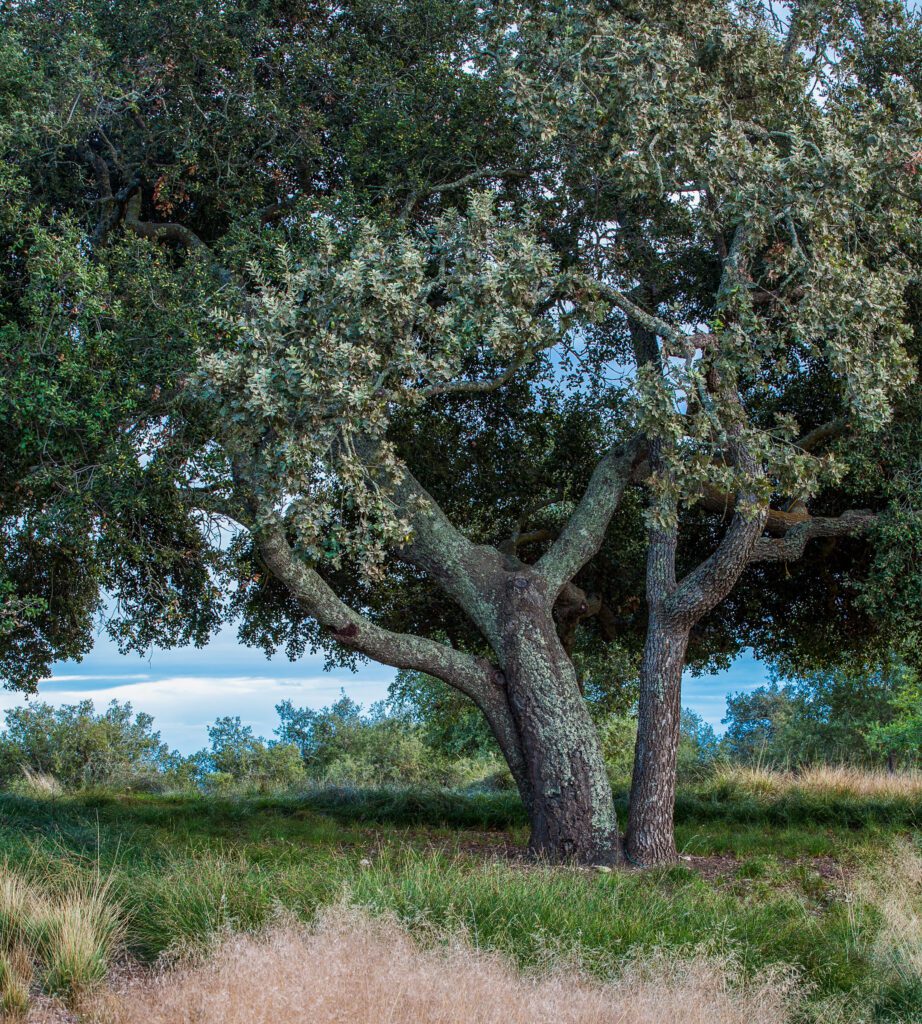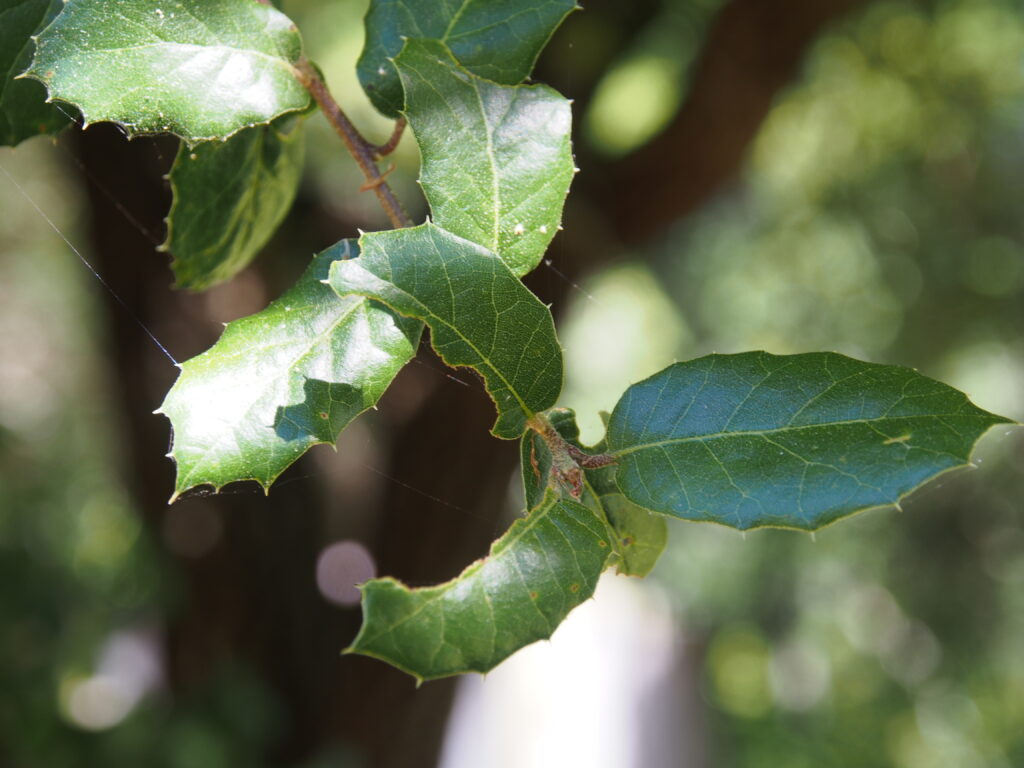University Elementary at La Fiesta School Garden
BACK TO FULL TOUR
Garden Features
Drought Tolerant
Edible Garden
California Natives
Drip Irrigation
Pesticide Free
Sheet Mulching
Lawn-Free Landscaping
Permeable Surfaces
Wildlife Habitat
Partner: City of Rohnert Park
The garden invites us to explore science, math, language arts, culture, history, the arts, and more. Through learning about plants, animals, and nature’s cycles, our students gain an understanding of the world around them.
Our history
The UELF Garden was founded in 2017 by a group of parent volunteers, led by Shannon Weese, Garden Committee president; our first garden teacher, Alisa Norstrom; and our former school principal, Charlotte Straub. Over the years the garden program has developed into a weekly classes at every grade level and includes hands-on learning in the garden. Lessons are designed to meet Next Generation Science Standards (NGSS) and support the learning done in the classroom.
In addition to our edible garden, UELF has a habitat garden to support local wildlife. This was a multi-year project with students performing the research to determine soil composition, slope, and area studies to determine which local, native animals would be best supported in our environment. Each class selected an animal, worked through what those animals need in their habitats (food, water, shelter, warmth), and planned how to meet these needs. Our habitat garden project was financially supported by the School Garden Network.
Current Gardens
Our school garden includes a food garden with a meeting space, the habitat garden, and our current project-in-work, the habitat expansion. The food garden includes seasonal vegetables and herbs, a few young fruit trees, and a variety of flowers to increase pollinator attraction. Our primary meeting space is shaded by two beautiful Redwood trees. Natural materials are used when possible to provide garden borders and seating – we have tree stumps that serve as chairs during weekly garden classes. Adjacent to the meeting space is a mature California Buckeye, known to our school community as the Story Tree, which is encircled by stumps and provides perfect location for class story time.
Our habitat garden supports for a wide variety of local wildlife and is a life lab for students of all ages. Manzanitas and ceanothus provide structural interest and are primary attractors of bees and hummingbirds. There is a small birdbath and a small pond with a solar-powered pump to provide water to wildlife visitors. One of our newest successes in this garden is the Dutchman’s Pipe, which bloomed in 2024 for the first time and supported at least a dozen California Pipevine Swallowtail caterpillars. Next to the pond is our Willow House. This dome-shaped structure provides a imaginative space for visitors to sit and enjoy views of birds and insects.
Our habitat expansion includes hummingbird favorites including red currant, hummingbird sage, and red monkeyflower, as well as a play kitchen and sensory bins used by our TK and K students. The fenceline hosts a hedgerow of coyote bush. Milkweed “mountain”, a long raised berm, provides 50 milkweed plants. Another shallow pond provides another water source for wildlife. Five false indigo were planted in 2024 in hopes of attracting the state insect, the California Dogface Butterfly, to our garden. This space is under development by students and the garden committee and borders the classroom backyards, where classes have tables and seating used daily by our classes.
Special Events
